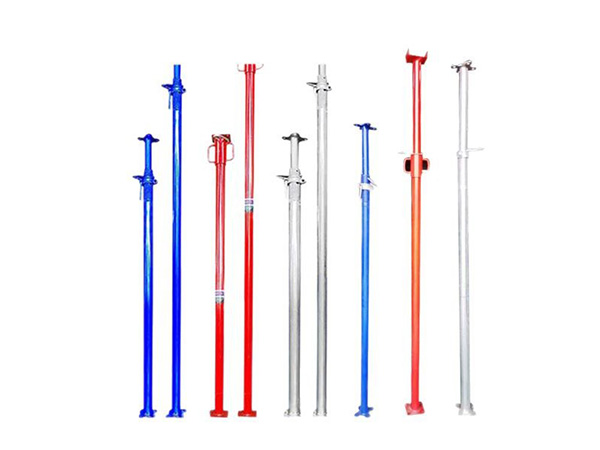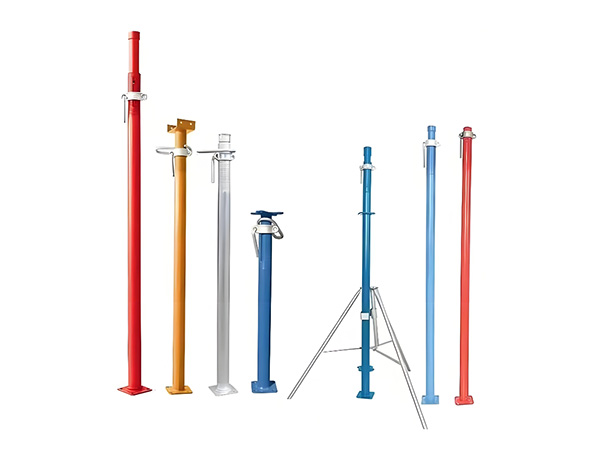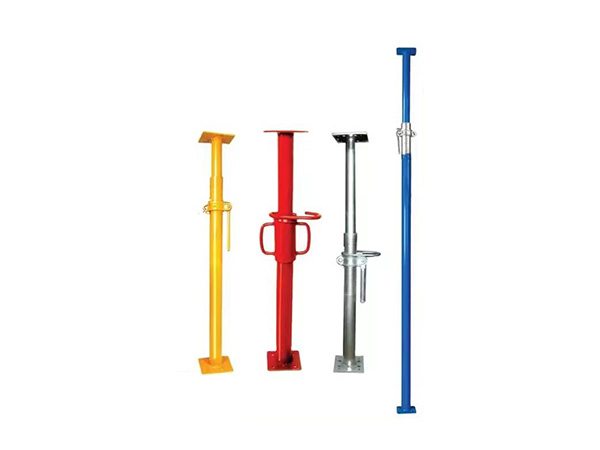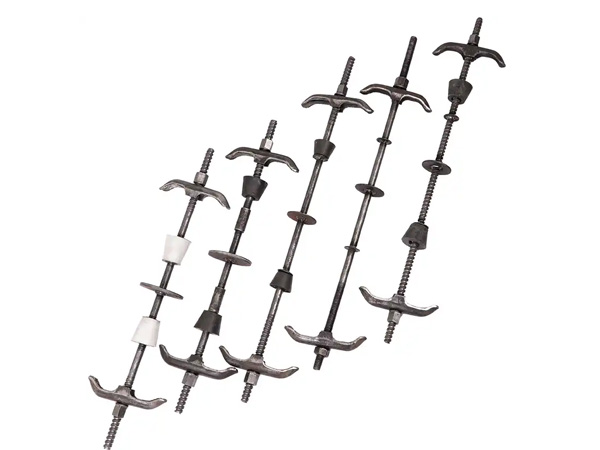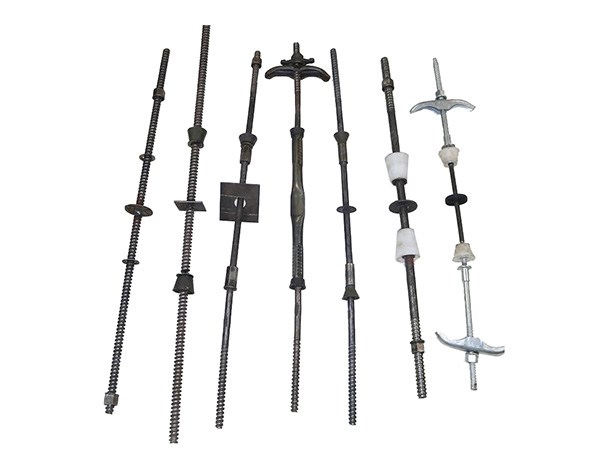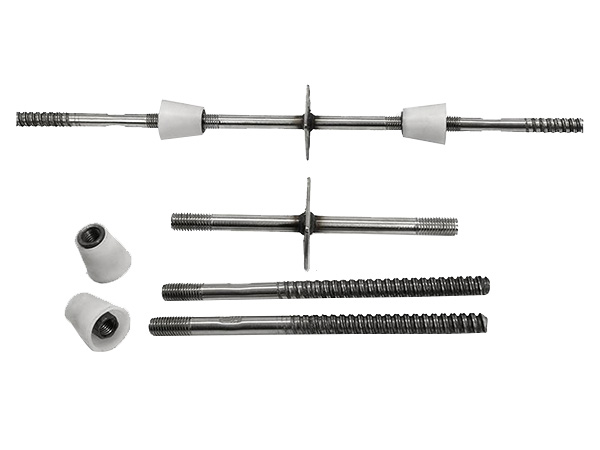- Site Navigation -
NEWS LIST
Precautions for wall screw removal?
Author:yicheng Date:2025-09-03 16:03:17 Hits:72
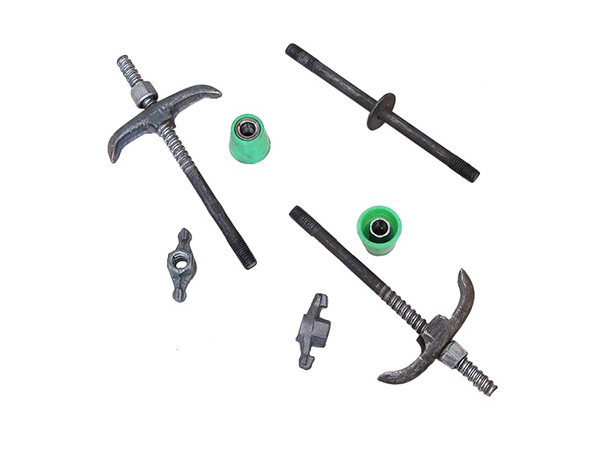
Precautions for wall screw removal?
The removal of the wall screw is a key link between concrete pouring and later structural protection,and it is necessary to strictly control the demolition timing,operation specifications and follow-up treatment to avoid damaging the wall structure,causing leakage hazards or material waste.The following is a breakdown of the core considerations:
1.Demolition timing:It is strictly forbidden to demolish prematurely to ensure that the strength of the concrete meets the standard
Strength testing is the core basis
Before demolition,it must be confirmed that the concrete strength meets the design and specification requirements:ordinary walls need to meet the design strength of concrete strength≥75%,and waterproof walls(such as basement exterior walls)and walls with large loads(such as load-bearing walls)need to reach 90%design strength.The strength judgment should be based on the compressive test report of the curing test block under the same conditions,and it is strictly forbidden to judge only by experience or time(for example,ordinary concrete usually takes more than 7 days at room temperature,and it needs to be extended to 14 days or even longer in a low temperature environment).
Avoid harsh environmental influences
If there is rain and snow,low temperature(below 5°C)or windy weather during demolition,protective measures should be taken:avoid the strength of concrete due to freeze-thaw damage at low temperatures,and cover the wall surface in rainy and snowy days to prevent rainwater from seeping into the screw holes during the demolition process.
2.Preparation before demolition:investigate hidden dangers,prepare tools and protection
Fully check the screw and surrounding conditions
Check whether the nuts at both ends of the screw are stuck or rusted due to concrete shrinkage:If the nut is rusty,it should be soaked in a rust remover(such as WD-40)for 10-15 minutes to avoid hard screwing causing the screw to break or the surface of the wall to peel off.
Confirm that the formwork support has been partially removed:Before removing the screw,the steel pipe support on the outside of the formwork should be loosened to avoid stress caused by the screw pulling,resulting in the deformation of the formwork or damage to the wall skin during dismantling.
Tools and Protection Preparation
Necessary tools:adjustable wrench(matches screw nut specifications),socket wrench(improves disassembly efficiency),grinding wheel cutter(handles non-removable screws or broken screws),anti-rust paint(handles screw cutouts in the later stage).
Personnel protection:wear non-slip gloves(to avoid hand slippage when disassembling),goggles(to prevent metal chips from splashing and injuring people when cutting screws),and fasten safety belts when working at height.
3.Demolition operation:standardize the operation by type to avoid structural damage
1.Detachable screw(such as three-stage type,casing type)
Follow the order of"first outside and then inside":first remove the outer side formwork,and then use a wrench to unscrew the connecting nuts at both ends of the screw(if it is a three-stage type,remove the outer rod first,then remove the inner rod)to avoid cracks inside the wall caused by directly pulling the screw.
Prohibit hard knocking and hard prying:If the screw is difficult to pull out due to concrete wrapping,you can apply a small amount of lubricant at one end of the screw,or use a wooden hammer to tap the end of the screw(the force should be controlled without damaging the wall),and it is strictly forbidden to smash the hammer to prevent the wall from being partially hollowed or cornered.
Recycling and classified storage:The extracted screws and nuts should be cleaned up of surface concrete residue in time,stored according to specifications(such as 12mm and 14mm screws separated),and checked whether the threads were intact,and the damaged parts should be marked to be repaired to avoid affecting the fastening effect during secondary use.
2.Non-removable screw(such as thread screw,waterstop screw)
Precise control of the cutting position:When cutting the exposed part of the screw with a grinding wheel cutting machine,the cutting surface should be 2-3mm lower than the wall surface(not level or protruding)to avoid bulges during wall decoration in the later stage,or rainwater seeping into the gap between the screw and the concrete.
Cutting speed and angle control:Keep the cutting machine perpendicular to the wall when cutting,and the speed is uniform(to avoid uneven cutting surface caused by too fast),and cover the wall around the cutting site with a damp cloth to prevent high-temperature metal chips from burning the wall skin.
Fracture treatment plan:If the screw breaks inside the wall(the exposed length is insufficient),it is necessary to drill holes around the fracture first(the hole diameter is slightly larger than the diameter of the screw),and then fill the hole with micro-expanded concrete after removing the fracture section.
4.Post-dismantling treatment:focus on preventing and controlling leakage to ensure structural integrity
Screw hole sealing(core precautions)
Waterproof walls must be"multi-layered":
Clean the hole:Use a hair dryer to blow off the floating ash and debris in the hole,and then use a brush dipped in water to moisten the inner wall of the hole(enhance the adhesion of the mortar).
Layered packing:the first layer is filled with 1:2.5 micro-expanded waterproof mortar to 1/2 of the hole,and after the initial setting(about 2-3 hours),the second layer is filled to be flush with the wall,and each layer needs to be tamped with steel bar to avoid cavities.
Waterproof reinforcement:After the hole sealing is completed,apply waterproof coating(such as polyurethane waterproof coating)2-3 times around the hole on both sides of the wall,and the coating range should exceed the edge of the hole by more than 50mm to form a waterproof reinforcement layer.
Simplified treatment of non-waterproof walls:holes can be directly filled with 1:3 cement mortar,but it is necessary to ensure that the filling is dense and the surface is smoothed to avoid wall remoisture or putty layer cracking in the later stage.
Protection of cuts and recycled parts
The cutting surface of the non-removable screw should be painted with anti-rust paint(at least 2 times)in time to prevent the screw from expanding after rust and damaging the wall concrete structure.
The recovered removable screw needs to be treated with anti-rust:if there is slight rust on the surface,it can be used to remove rust with a wire brush and then apply anti-rust paint;If the thread is severely damaged,the thread needs to be repaired with a tap to ensure that the nut can be screwed smoothly during secondary use.
5.Quality inspection:timely acceptance after demolition to eliminate hidden dangers
Appearance quality inspection:Check whether the wall surface is damaged due to demolition(such as dropped corners,hollow drums,cracks),whether the screw incision is flat,and whether the hole is sealed tightly(you can use a small hammer to tap the sealing part,and the sound of the drum without empty drums is qualified).
Waterproof performance test:For waterproof walls,a closed water test(lasting 24 hours)needs to be carried out 7 days after the hole sealing is completed:apply soapy water on the outside of the wall,observe whether there are any leakage traces on the inside,if there is a leak,the hole needs to be cleaned again and sealed twice according to the waterproof process.
Quality acceptance of recycled parts:Sampling check the straightness(bending degree≤1mm/m)and thread integrity of the recycling screw(through stop gauge detection,the general gauge can pass smoothly,and the stop gauge does not exceed 2 teeth),and the unqualified parts need to be stored separately and are prohibited from being put into the next construction.







